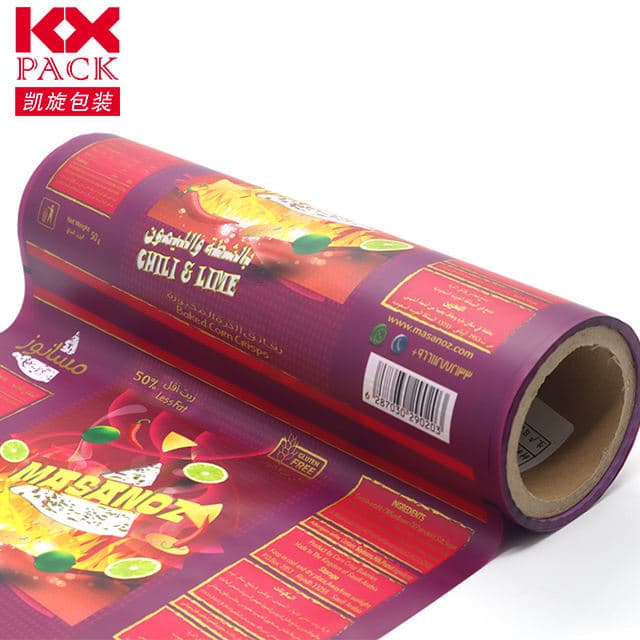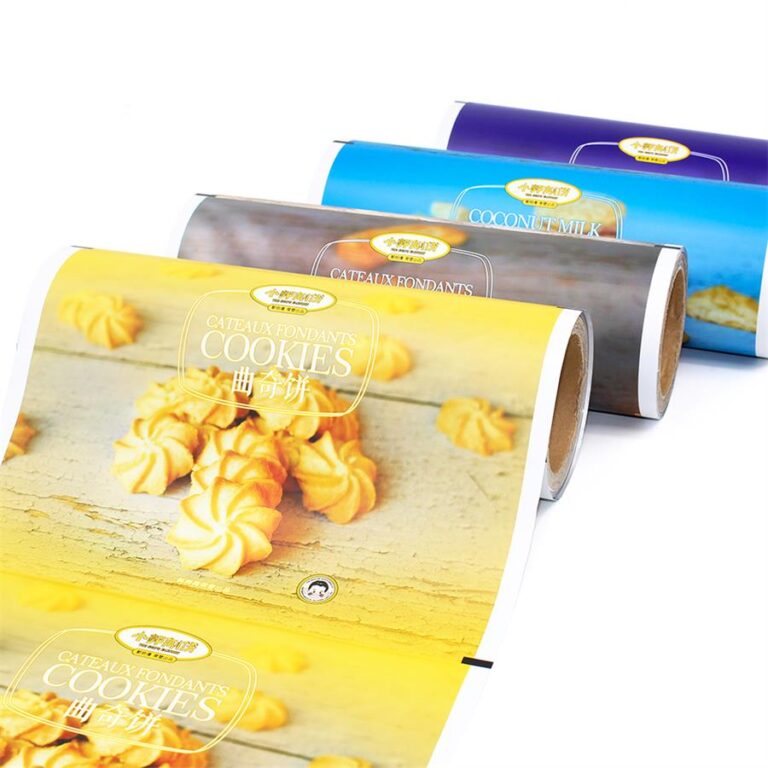Come scegliere il film da imballaggio Accurate per
Come scegliere il film per l'imballaggio accurato del tuo prodotto
Packaging film is materials that protect products during shipping, conservazione e utilizzo. Sono disponibili in tre tipi principali: pre-consumo (utilizzato prima della vendita del prodotto), post-consumo (dopo che il prodotto è stato utilizzato ma prima che venga smaltito) e biodegradabile. Each has its own set of benefits and drawbacks.
Packaging film-so we need to judge carefully, let us understand the various products.

Tabella dei contenuti:
1.What is packaging film and what are its benefits?
2.The different types of packaging films: Pre-consumer, post-consumer and biodegradable
3.Types of packaging films: Carton film, bag film, bottle cap film and labels
4.Applications of packaging films: Food, beverage, pharmaceuticals and other products
5.How to customize good recycle food packaging film with us?
6.Conclusione
What is packaging film and what are its benefits?
It is a type of synthetic material that is often used to protect products during shipping and storage. It is typically made of polyethylene, a type of plastic, and has a number of different uses, including food packaging, pharmaceuticals, and electronics.
One major benefit of packaging film is its ability to protect products from damage during shipping and storage. The material can withstand impacts and temperatures that would destroy other types of materials. Inoltre, the film can provide an attractive appearance for products and help ensure their quality.
Another benefit of packaging film is its environmental impact. Compared to other forms of packaging, such as cardboard boxes or plastic bags, it consumes less energy in production and has a lower impact on the environment when disposed.
The different types of packaging films: Pre-consumer, post-consumer and biodegradable
Packaging films can be broadly classified into three categories: pre-consumo, post-consumer and biodegradable. Pre-consumer packaging films are made before the product is sold to consumers and are used for things like shipping boxes and wrapping paper. Post-consumer packaging films are made after the product has been sold to consumers, but before it is disposed of or recycled. Biodegradable packaging films can be either pre- or post-consumer, but are designed to break down in an environment where organic matter thrives, such as the soil.
There are a variety of different types of packaging film available on the market today, each with its own unique benefits and drawbacks. Some of the most popular types of film include: clear wrap film, HDPE plastic bags, corrugated boxes, shrink wrap and stretch wrap.
Types of packaging films: Carton film, bag film, bottle cap film and labels
It is a type of packaging that is often used to protect products from damage during transportation and storage. Carton film, bag film, bottle cap film, and labels are all types of it.
Carton film is the most common type of film. It is made from paper or plastic and is often used to package items such as food products and cosmetics. Carton films are often shipped in bulk and stored in warehouses or on the shelves of retail stores.
Bag films are also made from paper or plastic and are used to package items such as groceries and clothing. Bag films are frequently shipped in bulk and stored in warehouses or on the shelves of retail stores.
Bottle cap film is a type of film packaging that is used on the top of a bottle. This type of film is made up of multiple layers that are placed one on top of the other. The topmost layer is made up of a plastic material that has been treated with a adhesive. When the film is applied to a bottle, it forms a seal around the opening of the bottle. This type of film can be used for both carbonated and non-carbonated drinks.
Labels are another type of film packaging roll that is used on boxes, jars, and cans. This type of film is also made up of multiple layers, but each layer is made out of a different material. The bottom layer is made out of paper or cardboard, while the middle layer is made out out polyester or cotton.
Applications of packaging films: Food, beverage, pharmaceuticals and other products
They have been used in many industries for many years. They are used in food and beverage products, pharmaceuticals, and other products. There are many types of them, but they all have one common goal: to protect the product from damage while it is being transported or stored. It can be made from a variety of materials, including plastics, paper, and metal.
One of the most common uses for it is in food and beverage products. These products need to be protected from damage while they are being transported or stored. They can help to do this by protecting the product from moisture, oxygen, and other contaminants. Films can also help to keep the product fresh by inhibiting the growth of bacteria and fungus.
Film technology has also been applied to pharmaceuticals.
Packaging films are being increasingly used to protect pharmaceuticals and other products from the environment. Films can prevent contaminants like bacteria, mold, and dust from entering the product and can also provide a barrier against moisture and light. Films can also help preserve the product’s flavor and color.
How to customize good recycle food packaging film with us?
Shantou Kaixuan Packaging Co.,Ltd
Focus diretto della produzione sull'imballaggio 20 anni,soprattutto nella stampa a colori,Realizzazione di blister e sacchetti.Integrato nel design,produzione e vendita. La fabbrica di Kaixuan copre un'area di 20000㎡,dotato di un 10000 officina di livello senza polvere,300m/min 12 macchina da stampa rotocalco a colori ad alta velocità,blisteratrice automatica ad alta velocità con tecnologia tedesca,macchina per la produzione di sacchi sigillanti a otto lati e altre attrezzature per la produzione di sacchi di alto livello.
Niente benzene, niente inchiostro chetonico. Nel frattempo, usiamo senza benzene e senza chetoni,inchiostro e altri materiali ecologici. La capacità giornaliera potrebbe raggiungere 150 tonnellate,soddisfa assolutamente le tue esigenze in Safe,Efficiente e sano.
Accettiamo ordini personalizzati per offrirti un preventivo corretto,dovremmo aver bisogno dei tuoi dati come di seguito:
- Qtà
- Stampa del disegno a colori
- Materiali e spessore
- Dimensione
Conclusione
All in all,here are some tips to help you choose the best packaging film for your product: -Choose a film that will protect your product from scratches and dents.
-Choose a film that is transparent so your product can be seen.
-Choose a film with a rating that is appropriate for the product you are selling.
-Make sure the film is cut to fit properly on your product.
-Test the film before using it on your product to make sure it will work properly.
Per tipologie o domande più dettagliate sulle pellicole per imballaggio alimentare, per favore riferisci a: https://kxpack.com/product-category/plastic-film/
Forniamo ma non ci limitiamo a prodotti di alta qualità, prezzi competitivi, servizio eccellente, eccetera.






